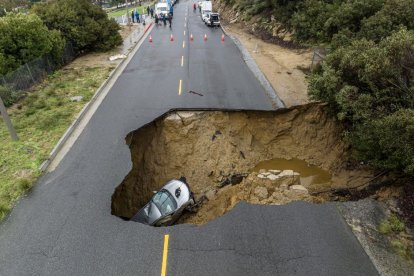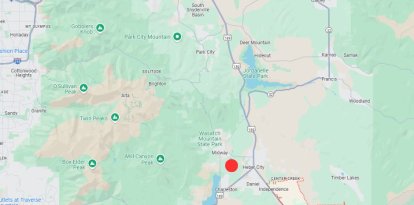Storms give no respite in California
At least 19 people have lost their lives after the passage of 7 atmospheric rivers through the state while the rains are expected to last at least until January 20.

(Cordon Press)
Following the passage of the seventh atmospheric river in California since Christmas, state authorities have confirmed the death of at least 19 people, in addition to the disappearance of a five-year-old boy for whom the National Guard continues to search. New towns have received evacuation notices, adding to the more than 50,000 people who have been forced to leave their homes while another 42,000 remain without power. Forecasts predict the arrival of strong storms during the next few days, especially on Saturday, while a drop in the intensity of the rains and a possible recess from the 20th onwards are expected.
With the appearance in Sonoma of a person trapped in his car under 10 feet of water and the body of a drowned man in El Dorado, the death toll directly related to the storms reached 19. In addition, more than 100 members of the state National Guard joined the search for the five-year-old boy who was swept away by the strong waters while rescuing his mother from a trapped car. Authorities continue to warn the public of the risks and request their cooperation. According to Governor Gavin Newsom, federal, state and local emergency teams are working together and mobilizing resources to deal with the damage caused by the storms. According to initial estimates, the cost of repairs will be in excess of $1 billion.
California expects strong storms over the weekend
According to the website poweroutage.us, 42,000 people are still without electricity in their homes. Thanks to "the largest response to a winter storm" in its history, Pacific Gas & Electric Co. managed to drop from 189,000 customers without power Tuesday to 28,000 by Wednesday night. Company officials were confident that in the next few days they will be able to access and repair most of the incidents, except for the most affected areas where access is impossible. For example, Monterey County authorities announced in a statement that "residents in both the peninsula and the Salinas area should expect to be cut off for two to three days."
The forecasts do not announce a lull, but warn of the arrival of several storms of varying intensity that will continue until next week. Although according to experts "it is too early" to say whether there will be a respite thereafter, several meteorologists believe that the rains could offer a respite from January 20. So says Michael Anderson, state climatologist for the California Department of Water Resources: "High pressure will build in and we will have a little chance to recover from these series of storms."
Risk due to high river flows even if rains stop
However, even if the rains stop, many rivers will still be at risk of overflowing due to the large amount of water they accumulate. The force of the current and the height of the flow will continue to be a danger to the inhabitants of the surrounding areas. "You have to pay attention to hydrological conditions, which will continue to evolve, especially in the larger rivers, even when the storms subside," Anderson insisted.
More than half of the annual rainfall in 16 days
According to the National Weather Service, the central region of the state has received an amount equivalent to more than half of the precipitation endured in a normal year. This is the case in Oakland, which has conceded in this period an amount equivalent to 69% of its normal level over a year; Santa Barbara, with 64%; Stockton, with 60%; downtown San Francisco, with 59%; and downtown Sacramento, with 50%.
NASA shared a tweet in which, from a satellite, the evolution of the state of the Californian soil over the last few months can be seen "the drastic soils transition from drier than normal in Nov '22 to near record wetness in Jan '23."
Snow cover at one of the highest levels in the world
There is also a risk due to the high amount of snow that has fallen, especially in northern California. According to the National Weather Service in San Diego, snowpack thickness is at one of the highest levels in history.
Newsom: Blame it on "climate change."
Amidst the disaster, Newsom took the opportunity to bring up one of his fetish topics: climate change. In a tweet, the governor lists the natural disasters the state has suffered, attributing them to climate change and inviting citizens "to take it seriously."
RECOMMENDATION





















